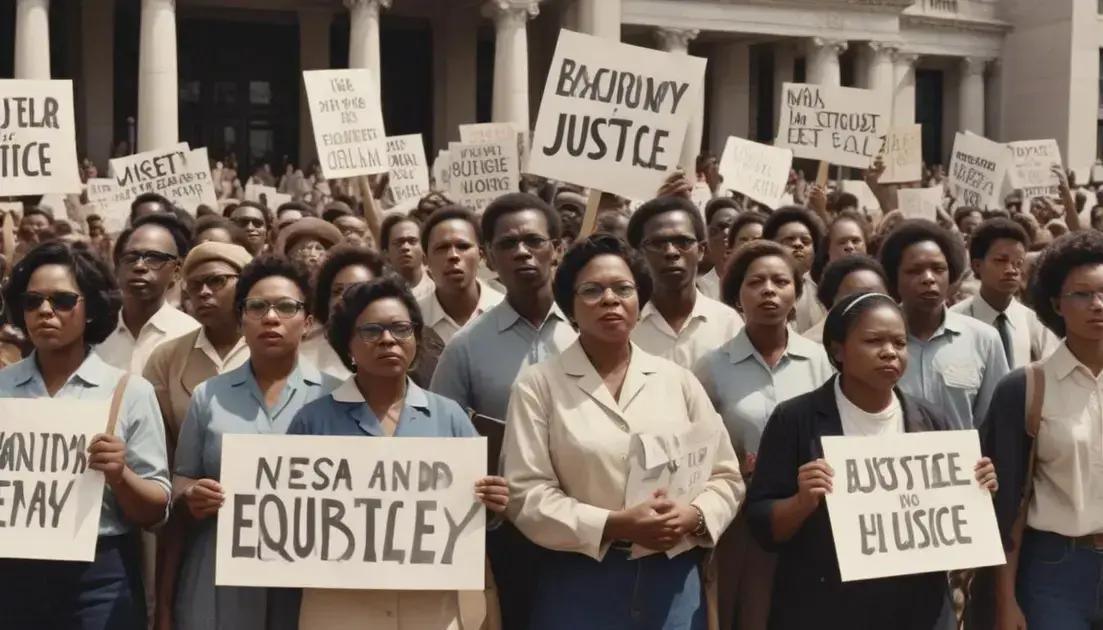
Occupy Movement (2011)
The Occupy Movement, which began in 2011, focused on fighting economic inequality and corporate greed. It quickly grew from its origins in New York City to inspire global protests advocating for social justice. The movement’s influence is seen in its artistic expression, changing conversations about wealth disparity, and encouraging ongoing activism. Despite its original camps being dismantled, the spirit of the movement continues to inspire discussions on financial fairness and collective action for a better future.
The Occupy Movement began as a protest in New York City, capturing the world’s attention and raising urgent questions about financial inequality. What sparked this movement and how did it echo globally?
Introduction to the Occupy Movement
The Occupy Movement started in 2011, mainly in New York City. It quickly grabbed attention around the world. The movement grew from concerns about big banks and financial inequality. People were upset about how the wealth was distributed. They felt a few people were getting richer while many struggled.
What Sparked the Movement?
The movement began after the financial crisis of 2008. Many lost their jobs and homes. This economic stress led to anger and frustration. Activists wanted to speak out against this unfairness. They aimed to shine a light on the “1%” – those who held the most wealth.
How Did It Grow?
As news spread, more cities around the globe joined in. Protesters set up camps in public spaces. They used signs and chants to share their message. This grassroots effort focused on issues like greed and corporate power.
Global Impact
The Occupy Movement inspired similar protests in other countries. People shared their frustrations about economic issues. These demonstrations highlighted the struggles faced by many citizens, encouraging more discussions about equality.
Key Events and Timeline
The Occupy Movement had several key events that shaped its growth. Each event helped spread the message about inequality and corporate greed.
September 2011: The Beginning
The movement started in September 2011. Protesters gathered in Zuccotti Park, New York City. They set up tents and began to voice their concerns. The phrase “We are the 99%” became popular among the protesters.
October 2011: Global Protests
In October, protests spread to other cities worldwide. People held demonstrations in Europe, Asia, and Canada. This showed that many also cared about economic fairness.
November 2011: Police Action
As the winter approached, some cities moved to clear the camps. Police raided Zuccotti Park and other locations. This led to clashes between protesters and law enforcement. The media covered these actions widely, sparking more interest.
2012 and Beyond: Continued Influence
Even after the camps closed, the Occupy Movement’s ideas lived on. Discussions on wealth inequality and corporate money in politics continued to grow. Activists inspired new movements globally, emphasizing social justice and economic reform.
Global Impact and Responses
The Occupy Movement sparked conversations worldwide about wealth and power. Many people joined in to push for change. As news of the protests spread, cities across the globe took notice.
Response from Governments
Governments reacted in different ways. Some supported the movement’s call for reform. Others focused on clearing protesters from public places. These actions got mixed responses from the public and media.
Support from Other Movements
Many social justice groups embraced the core ideas of the Occupy Movement. They called for fairer policies and a more equitable economy. This created a network of interconnected movements around the world.
Media Coverage and Opinion
Media outlets covered the movement extensively. Some praised its goals while others criticized its methods. These differing views helped fuel discussions about capitalism and democracy.
Long-lasting Effects
The Occupy Movement encouraged people to think critically about economic issues. It led to more activism, social awareness, and discussions about inequality globally. The messages of the movement still resonate today.
Cultural Significance
The Occupy Movement holds great cultural significance. It changed how people talk about wealth and power. This movement made many question the status quo.
Art and Creativity
Art played a big role in the movement. Protesters created murals, posters, and performances to express their messages. These creative works captured the spirit of activism and hope.
Shift in Conversations
Before Occupy, few discussed economic inequality openly. The movement made it a central topic. Now, many feel more comfortable discussing financial issues and social justice.
Influence on Media
The way media reports on activism also changed. Journalists began to cover grassroots movements more closely. This helped raise awareness of various social and economic concerns.
Legacy of Activism
The Occupy Movement encouraged a new generation of activists. It showed that collective action can lead to change. Movements inspired by Occupy continue to fight for equality and justice.
Conclusion
The Occupy Movement sparked a wave of activism and social change. It challenged many to think about economic issues differently. Wealth inequality became a hot topic in discussions.
Lessons Learned
One key lesson from the movement is the power of collective voices. When people unite, they can create significant change. Activism isn’t just about large protests; it can happen in small actions, too.
The Ongoing Fight
Although the initial movement has faded, its spirit lives on. Many activists continue to advocate for equality and fairness. They remind us that the fight for justice never truly ends.
Inspiration for the Future
The Occupy Movement inspired a new generation of leaders. Young people are increasingly engaged in social issues. This passion for change is crucial for future progress.
Conclusion
In conclusion, the Occupy Movement has taught us important lessons about activism and social change. It showed how powerful collective voices can be when it comes to fighting for equality and justice. While the movement may have started in one city, its impact spread around the world.
Even though the camps have closed, the spirit of the movement lives on. Many continue to advocate for financial fairness and social justice. This ongoing fight reminds us that change is possible when people come together for a common cause.
As we move forward, it’s vital to keep these conversations alive. By inspiring each other and staying engaged, we can build a better, more equitable future for everyone.


